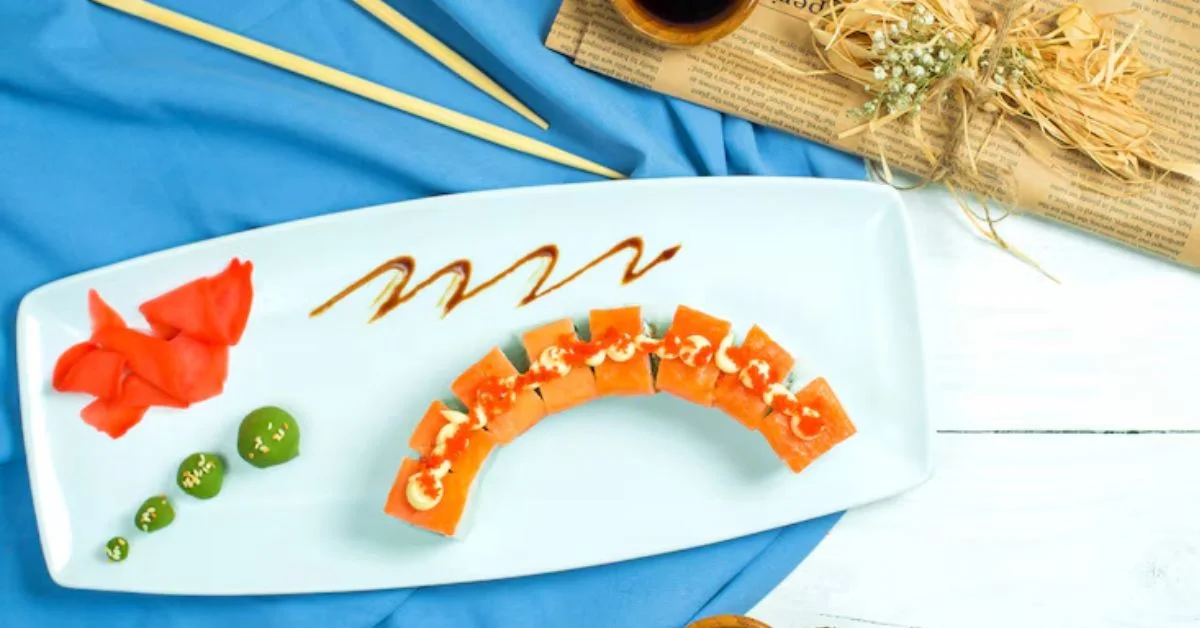Nigiri sushi occupies a treasured and exalted state in Japanese culinary tradition for its simplicity and elegance. The dish comprises a slice of raw fish served atop a small mound of vinegared rice, thus creating harmony between flavor and texture. This guide will examine nigiri sushi’s history, types, how it is made, and other cultural aspects.
Nigiri sushi refers to a traditional Japanese preparation consisting of a small hand-formed oval mound of vinegar rice usually crowned with a slice of raw, or cooked, seafood. Nigiri translates literally to “hand-pressed” and signifies the organic manner in which the rice is formed and the topping is adhered.
Characteristics:
Rice: Seasoned rice, usually with vinegar, sugar, and salt.
Topping: Generally raw fish, such as tuna or salmon, but could also include cooked shrimp or eel.
Presentation: A small pinch of wasabi is often placed between the rice and fish, sometimes a thin strip of nori holds the two together.
History and Origins of Nigiri Sushi
Traditionally, nigiri sushi can be said to be a product of early nineteenth-century Edo (Tokyo) fast-food culture: the speed of preparing nigiri allowed people to consume raw fish on seasoned rice with barely any delay.
Originally sold street-side, nigiri gained popularity based on the convenience of being able to have the freshest fish from the Tokyo Bay. It became a gourmet art form with improvement in technique by the sushi chefs in working with balancing flavor and presentation quite well.
Varieties of Nigiri Sushi
With its various seafood-topping selections, nigiri sushi provides an entire different taste experience with each. Some types are:
Maguro (Tuna):
Akami: Lean red meat from the back or sides of the tuna.
Chutoro: Medium fatty tuna, in-between fatty and lean cut.
Otoro: The fattiest part, rich and buttery.
Sake (Salmon):
Favorite for its smooth texture with a slightly sweet flavor.
Hamachi (Yellowtail):
This fish has a gentle taste with higher firmness.
Ebi (Shrimp):
Most commonly served boiled–and butterflied–sweet and tender.
Unagi (Fresh Water Eel):
Grilled and glazed with a sweet soy sauce, smoky tasting.
Ika (Squid):
Slightly chewy, with subtle sweetness.
Tako (Octopus):
Firm and chewy, often blanched to render tenderness.
Tamago (Sweet Omelette):
A layered omelette with sweet notes, creating great contrast to seafood varieties.
These varieties relate to individual tastes, varying highly among them, and the appeal of nigiri sushi, catering to a wide range of palates.
Nigiri Sushi against Sashimi against Maki: An Approach to Understanding the Differences
Nigiri, sashimi, and maki should all be distinct and different since they are each a one-of-a-kind gourmet eating experience:
Nigiri Sushi:
Little Description: The rice with vinegar is topped with a slice of seafood.
Serving Style: It is held together by hand pressure and often garnished with wasabi.
Sashimi:
Little Description: Raw fish or seafood is thinly sliced and served without any rice.
Serving Style: Served alone and often garnished with daikon radish, shiso leaves, etc.
Maki-Rolled Sushi:
Little Description: Vinegared rice and fillings, such as fish, vegetables, and sometimes egg, all rolled up in a sheet of nori.
Serving Style: Cut into bite-sized pieces.
Learning these differences adds flavor to our understanding of Japanese gastronomy and helps to remember what is fishy about this whole affair.
Nigiri Sushi at Home
Making nigiri at home can actually prove to be a great culinary endeavor. Here’s a step-by-step guide:
Ingredients:
Sushi Rice:
2 cups Japanese short-grain rice
1/4 cup rice vinegar
2 tablespoons sugar
1/2 teaspoon salt
Toppings:
1/2 lb fresh, sushi-grade fish (e.g., tuna, salmon)
Optional: cooked shrimp, eel, or tamago
Condiments:
Wasabi
Soy sauce
Pickled ginger
Equipment:
Sharp knife
Rice paddle or wooden spoon
Bowl of water with a splash of rice vinegar (for wetting hands)
Instructions:
Prepare the Sushi Rice:
Wash the rice under running cold water until no further starchy cloudiness measures out of the water.
Follow directions on your rice package for cooking.
While cooking rice, in a small saucepan, mix together rice vinegar, sugar, and salt, over low heat until dissolved.
As soon as the rice is finished cooking, spoon it out into a large bowl and carefully fold in the vinegar mixture. Let cool to room temperature.
Prepare the toppings:
Take a sharp knife and cut the fish into pieces about 2.5 inches long and 1 inch wide.
Form the nigiri.
Wet your hands with the vinegar water to keep the rice from sticking to your palms.
Take a small amount (about the size of a ping-pong ball) and carefully pinch together into an oblong shape.
Optional: Place a small dab of wasabi on one side of the fish slice.









